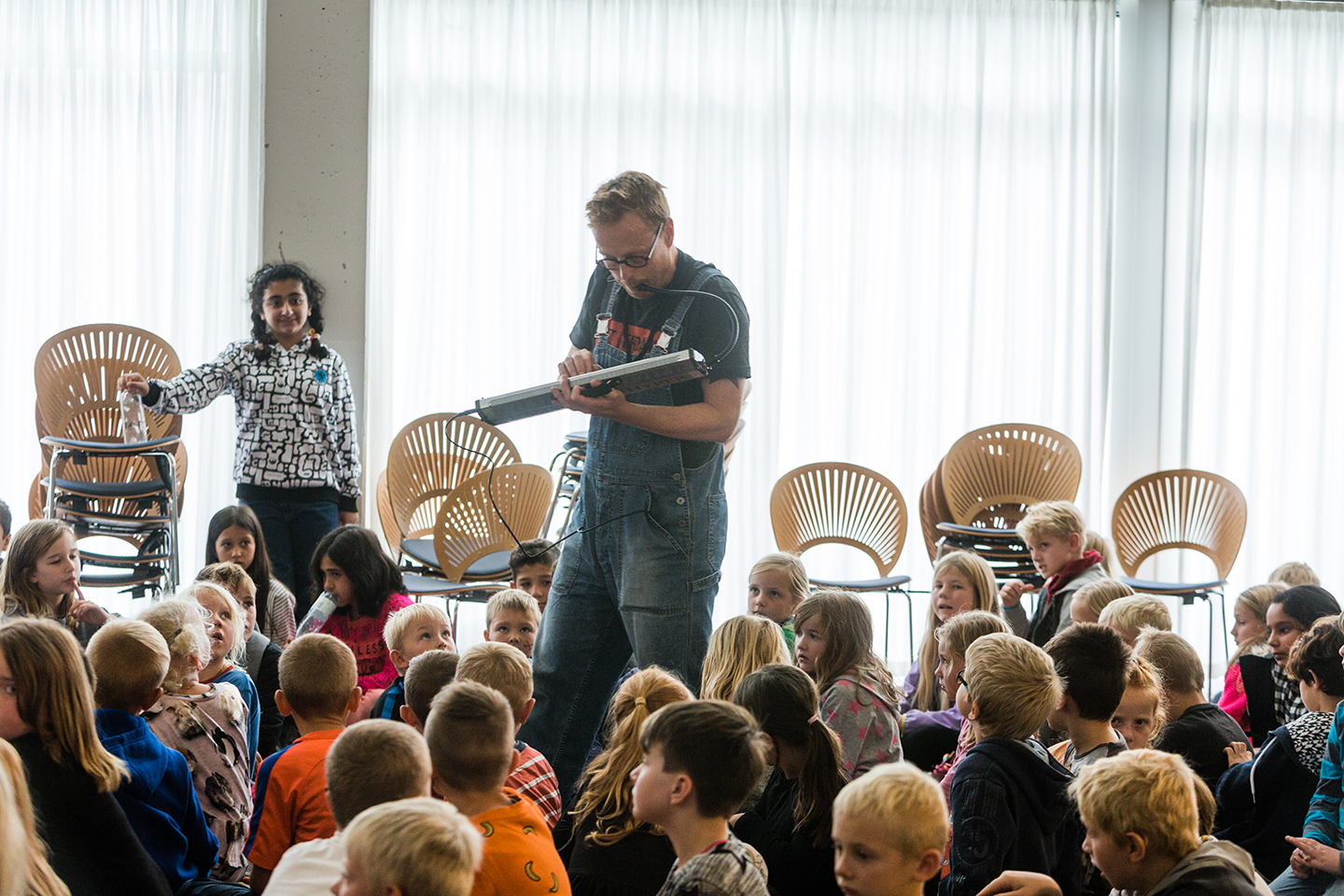Many concert productions for children use visual or dramatic techniques to create focus, sustain interest and supply context for the music. There is absolutely nothing wrong with this, and there are many fine productions that use any number of extramusical techniques to great effect. But, sometimes they get in the way of (or replace!) a more direct experience of the music, and the concert becomes less about the music and more about something else.
There are any number of reasons for this, but primarily it has to do with the special nature of music as an art form. Music is invisible, it does not appeal directly to our strong visual sense. Music is also temporal. It reveals itself over time. This means that music demands both concentration and memory to be perceived as an artistic whole. For children, these characteristics result in music being often overwhelmed by stronger visual aspects, or by the social context of the concert program.
Does it get us any closer to the music to know that Sergei Prokofiev was a famous composer? That he was born in 1891? Was a practicing Christian Scientist? Has an airport named after him in Donetsk Oblast, Russia? That Peter and the Wolf is his opus 67? That the bassoon plays the part of Peter’s grandfather? No. Fun facts. Nice to know. Provides context. Doesn’t help us actually listen, because we are listening for the bassoon in the hopes of finding the grandfather. The actual music becomes subservient to an auditive story.
When does a concert stop being about the music? It is not surprising that it is easier to entertain several senses than it is to present a pure listening experience. The truth of the matter is that music (for all its simplicity) is difficult. Listening without something to look at, a storyline to follow, or a catchy lyric demands skill. But if we are to present music as an independent art form, and not merely as a component part linked to other forms of artistic expression, we must help our audience to develop their active listening skills.
We have some traditional tools to help children understand their concert experience. None of them especially effective. “Dumbing down” musical content for young audiences is taking the easy way out. A good concert must do more than meet the audience, it must also challenge them. Factual preparation like composer information, instrument names or style periods creates an academic framework, but brings us little closer to the actual music. Superficial evaluation ("Did you like the concert?") reveals something of our existing music preferences, likes and dislikes, and social context, but doesn’t help us to explore the music we are actually listening to. Classroom discussions after the concert have a certain function in that they can confirm or validate the groups’ concert experience. But, such discussions are often unstructured and overly simplified simply because most children lack the vocabulary to describe their experiences, the maturity to identify and label their feelings, and the metacognitive skills to reflect upon their own thinking.
The ways in which we have learned to listen can also get in our way. Listening is traditionally taught as functional listening. Students learn to listen for timbre in order to identify instruments, to repetition in order to identify musical forms, and to contrast in order to identify musical concepts such as dynamics, tempo changes, or changes in meter. Music researcher David Elliott describes the skill path of a listener as, “hearing - listening to - listening for.” What lies beyond this kind of functional listening? What kind of listening can get us even closer to the music?
Functional listening has its place, but what about purely sensory listening? What about listening completely free of a dependency on pre-existing concepts, specialized terminology or previous experience? Unconditional listening. This kind of "pure" listening has been explored by composers such as John Cage in his book Silence: Lectures and writings, and Pauline Oliveros in her Deep Listening projects. Unfortunately, the techniques and ideas of both Cage and Oliveros demand a level of intellectual and perceptual maturity not present in most children.
There are, however, easy and effective techniques for young students to develop their active listening skills. These techniques are simple enough to be used by a grade school teacher who is not a music specialist.
Some of the most interesting research into building listening skills in children is being done by Robert E. Dunn at Brigham Young University and by Abigail Housen at Harvard University’s "Project Zero".
Photo credit: Christian Brandt



Leave a Comment